
Corvo, the premier site in the Western Palearctic for Nearctic landbird vagrants, was once again visited by a group of mainland European birders in autumn 2007. Their exciting finds, including a stunning Common Nighthawk, several Yellow-billed Cuckoos and a Pacific Golden Plover, are listed below in this article for Surfbirds.com by Peter Alfrey.
Village
3 Yellow-billed Cuckoo (including one dead); 2 Semi-palmated Plover; 2 Pectoral Sandpiper
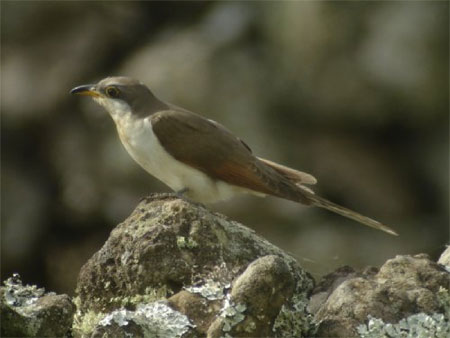
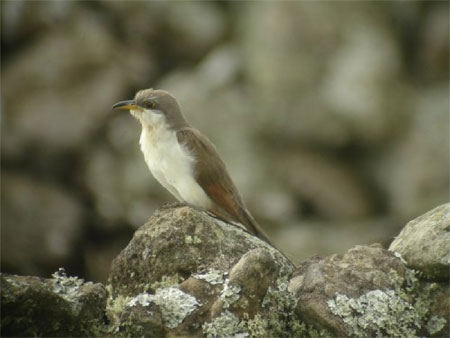
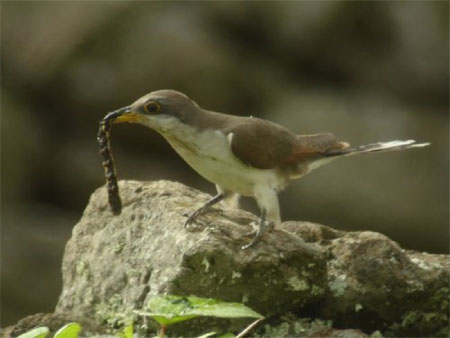
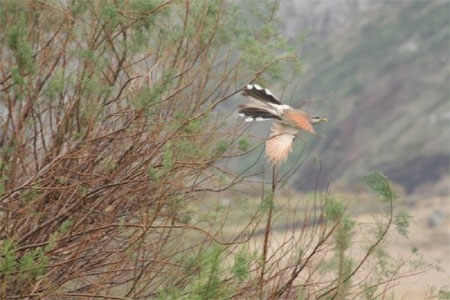
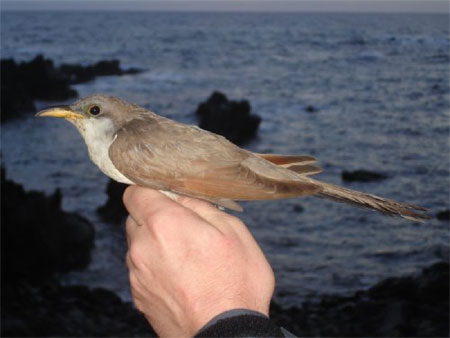
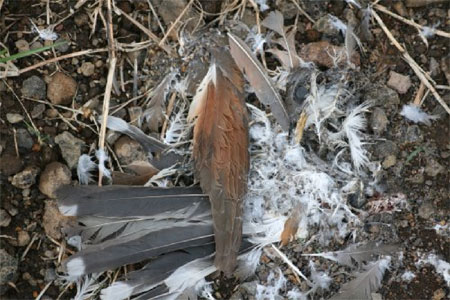

During our visit there were at least five different Yellow-billed Cuckoos on Corvo. This was a minimum figure and included two birds found dead. One was taken by a cat and the other flew into the birder’s guesthouse window and landed in one of our chairs. Another bird was mist netted and ringed. All birds were concentrated in the village fields where they were seen to mainly be feeding on convolvulus hawk moth caterpillars. On the neighbouring island of Flores there were an additional two to three Yellow-billed Cuckoos.
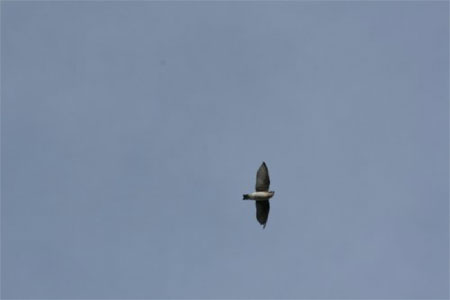
Juvenile/1st winter Tree Swallow over the village. This bird is in active moult, clearly displaying the characteristic post juvenile moult of this species. On the right wing, p10 is worn and p8 and p9 are still growing. A second Tree Swallow was discovered on Corvo a few days after this bird. The bird was identified as a second individual because the moult pattern was different. The second bird was only moulting it’s inner primaries. Both birds were juveniles as they were grey-brown on the upperparts and had smudgy markings on the breast.
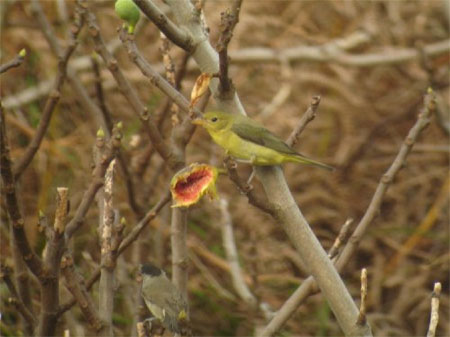
Riberia de Ponte
2 1st winter Indigo Bunting
Village
1 1st winter Sanderling found at 12:30am in spotlight; 4 Semi-palmated Plover; 5 Red-breasted Merganser
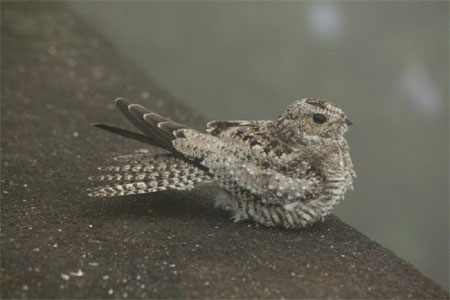
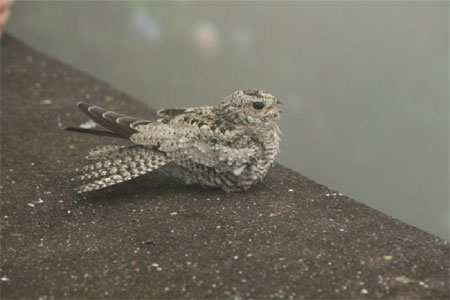
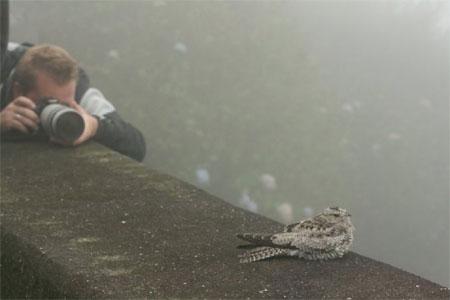
Common Nighthawk. This stunning bird was found in thick fog along one of the eastern roads. It was simply sitting on the wall, within arms length of the footpath and did not seem too bothered by the presence of 12 birders watching it and four locals watching us. The plumage was distinctively cold in tone. Sibley describes the palest subspecies of Common Nighthawk as the ‘Northern Plains’ Common Nighthawk, so perhaps there is some relevance here. Unlike all European nightjar species the wing tips, at rest, project beyond the tail on Common Nighthawk. The pale tipped primaries indicate that this bird is a juvenile.
Riberia de Ponte
1 Indigo Bunting
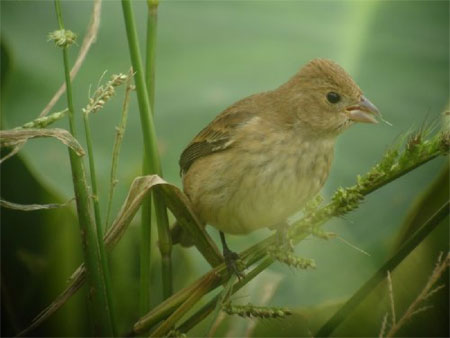
1st winter Indigo Bunting. One of two birds which were present. Indigo Buntings have been recorded on Corvo in the last three consecutive years. In 2005 there were seven birds on the island, one in 2006 and two in 2007. This bird can be aged as a first winter by the moult contrast present in the greater coverts (visible here). Also interesting here is the difference in length of the different generation feathers. This bird can be sexed as a presumed female as there was little ‘indigo’ in the plumage. The second bird on the island showed extensive and patchy areas of ‘indigo’ in the plumage indicating it was a young male. Similar Passerina species can be ruled out by the presence of streaking to the breast- both Lazuli and Varied Bunting are unstreaked.
Village
1 Short-eared Owl; 1 Gadwall flew east; 2 Great Shearwater flew east
Terceria Island
Cabo da Praia
1 juv Pacific Golden Plover! found by Darryl a week before and luckily still present- surely a genuine Azores blocker; 1 juv American Golden Plover; 3 juv Least Sandpiper; 3 Semi-palmated Plover; 2 Knot; 3 Little Stint; 1 juv Lesser Yellowlegs; 1 Whimbrel; 2 Curlew Sandpiper; 6 Black-tailed Godwit; 1 Bar Tailed Godwit; 3 White-rumped Sandpiper; 2 Ringed Plover; 1 juv Ruff; 1 Snow Bunting flew over.
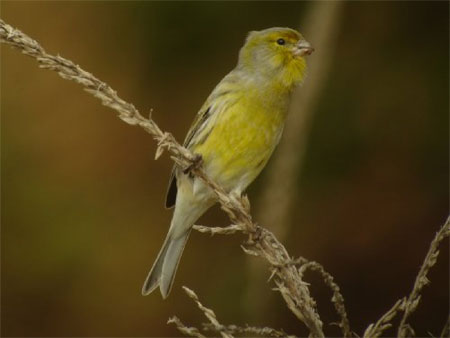
Canary. The variation in plumage of the Azorean Canary population is extensive, presumably related to sex and age.
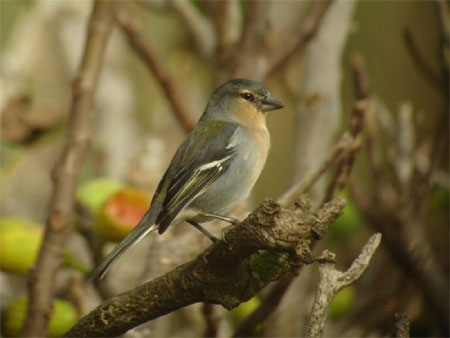
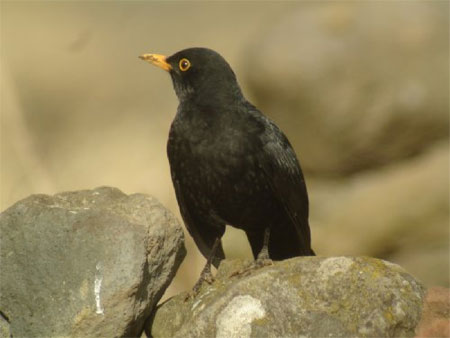
Azorean Blackbird T.m azorensis. Compared with nominate merula Azorean Blackbirds are glossier black, smaller and shorter winged. The females are also darker. Azorensis is one of seven races of Blackbird recognized in the WP.
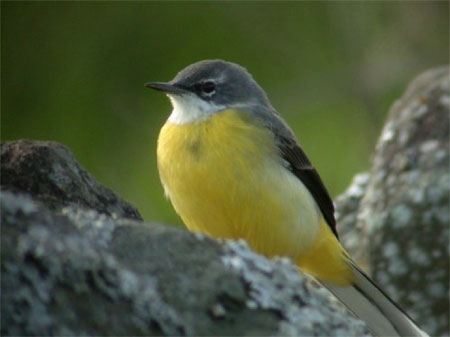
Azorean Grey Wagtail M.c.patricia. Note the reduced supercilium compared to our birds and difference in underpart colour, displaying greater yellow saturation and extent.
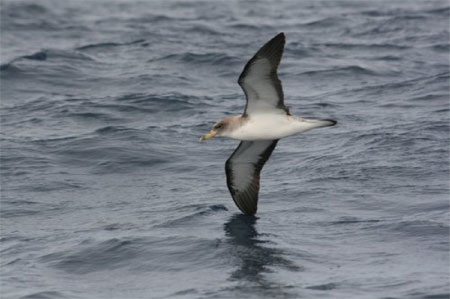
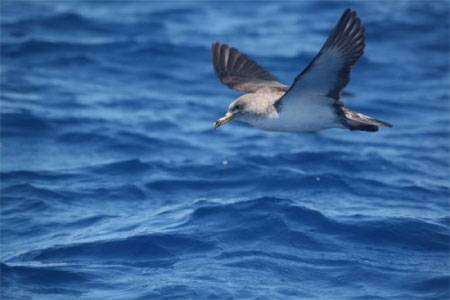
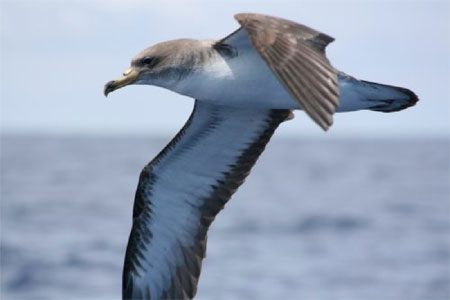
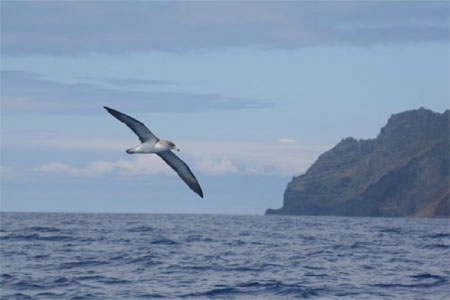
Cory’s Shearwater- an abundant breeding resident on Corvo. Young birds are often found lost and confused inside houses, gardens and waddling down the streets of Corvo village during October and November.
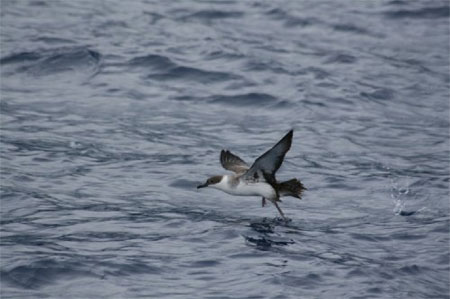
Great Shearwater- a few of this species are present amongst the vast rafts of many thousands of Cory’s Shearwaters

2nd winter Atlantic Yellow-legged Gull.
OTHER WILDLIFE
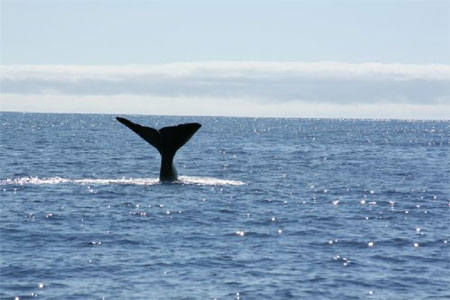
Sperm Whale. In addition to the birds, I also saw several pods of Bottlenose Dolphins, 5 Sperm Whale and 1 Humpback Whale which was breaching for over 45 minutes just offshore
THE BIRDERS
A few shots of some of the birders who visited Corvo in 2007
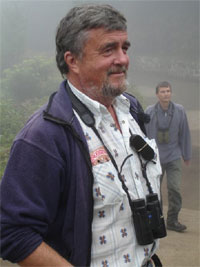 | 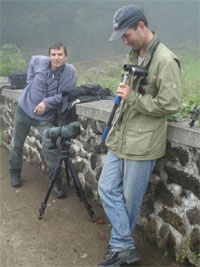 | 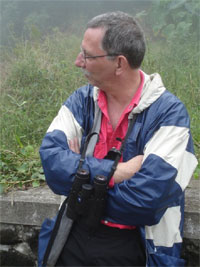 |
| Svante Aberg | Markku Santamaa | Ingvar Torsson |
 | 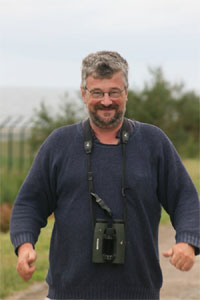 | 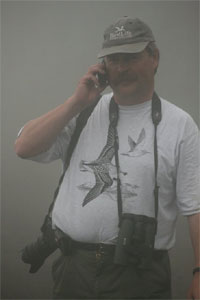 |
| Vincent Le Grande | Rene-Marie Lafontaine | Jukka Ihanas |
 | 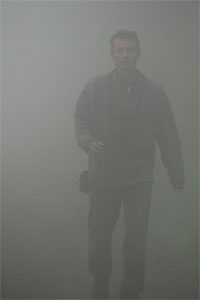 | 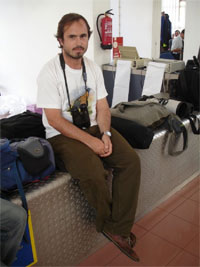 |
| Eric Didner | Pierre-Andre Crochet | David Monticelli |
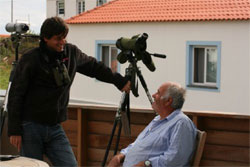 |  |
| Peter Alfrey with Manuel | Darryl Spittle |
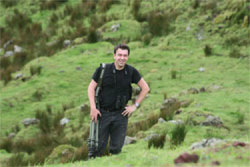 | 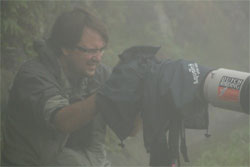 |
| Frederic Jiguet | Rafael Amada |